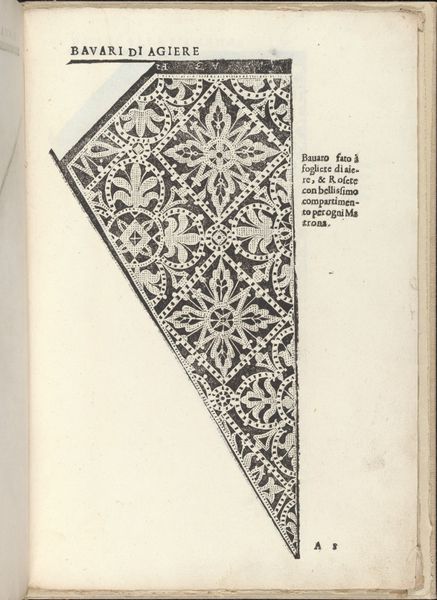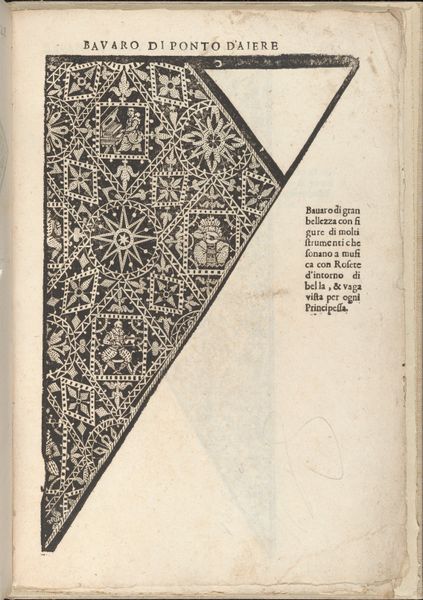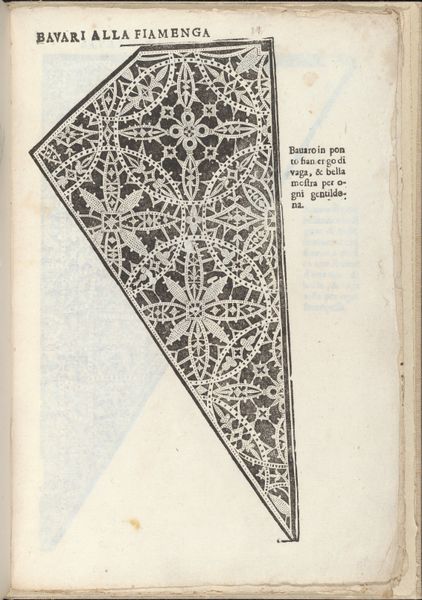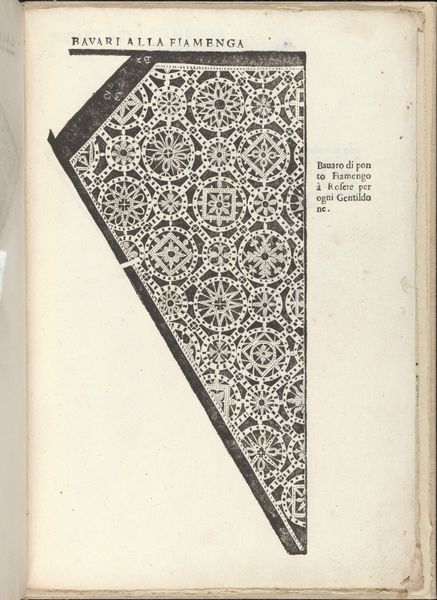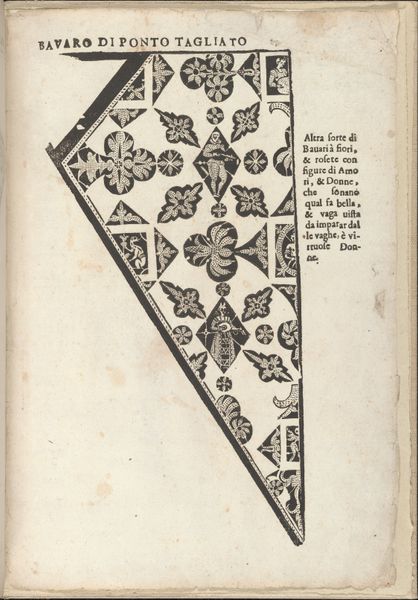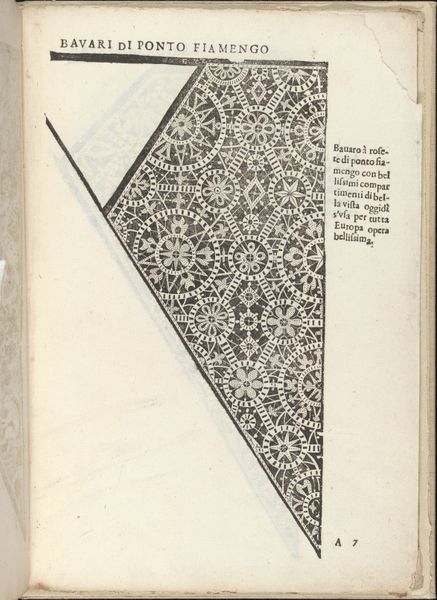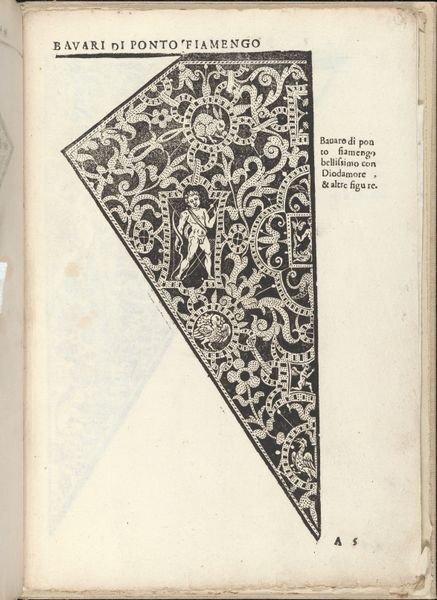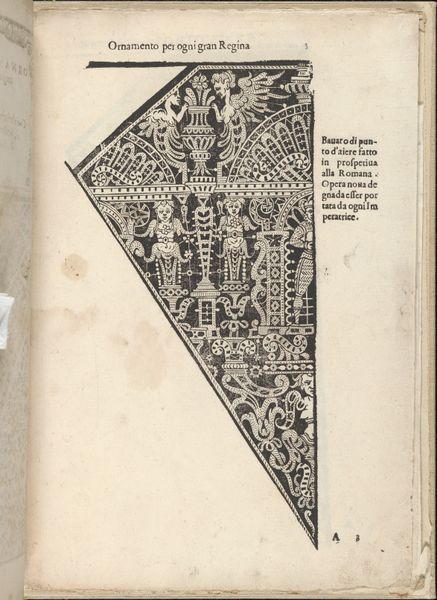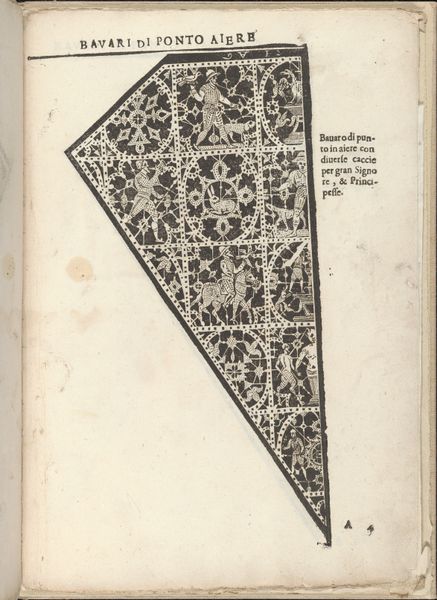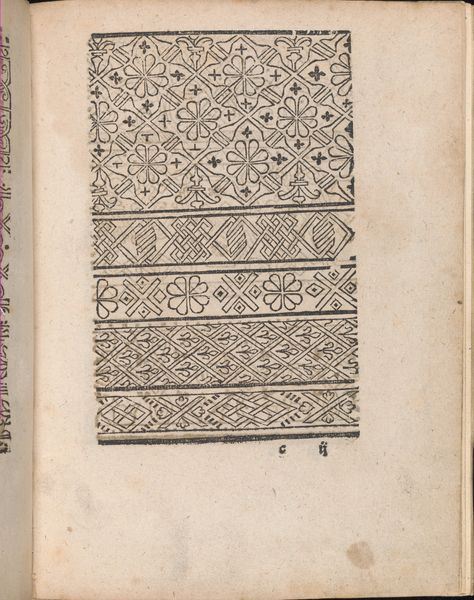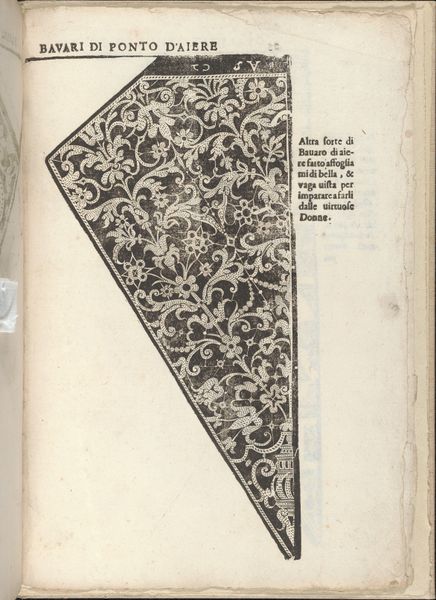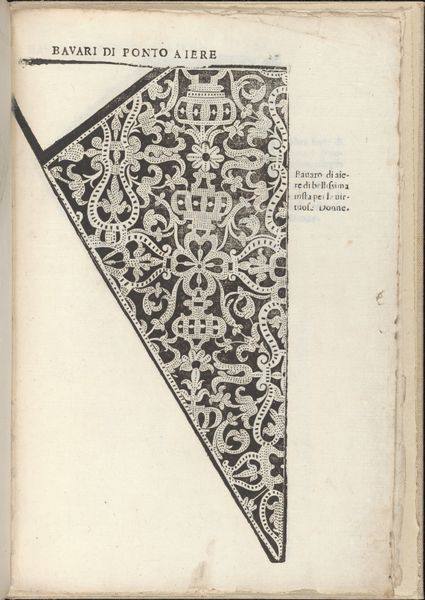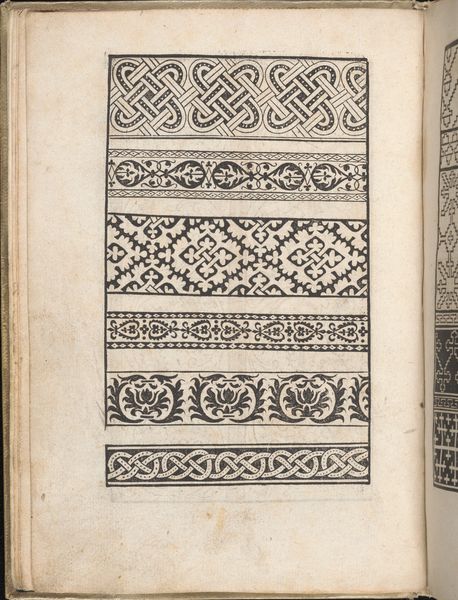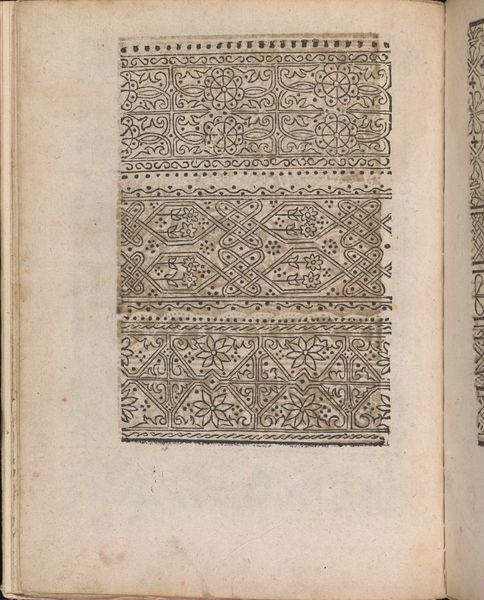
Ornamento nobile...Fatta da Lucretia Romana (Libro V of the Corona), page 12 (recto) 1620
0:00
0:00
drawing, graphic-art, print, paper, ink
#
drawing
#
graphic-art
# print
#
paper
#
11_renaissance
#
ink
Dimensions: Overall: 12 3/16 x 8 1/4 in. (31 x 21 cm)
Copyright: Public Domain
Curator: This is page 12 from Cesare Vecellio's "Corona", specifically, "Ornamento nobile…Fatta da Lucretia Romana," created around 1620. Editor: Immediately, I'm struck by how incredibly detailed and intricate this design is; it looks like a flattened doily someone decided to make aggressively angular. It’s very precise, quite rigid. Curator: It’s a pattern for needle lace, demonstrating a highly fashionable style from the era. It was more than just decorative—these designs played a significant role in establishing and reinforcing social hierarchies. Fine lace was incredibly expensive and exclusive. Editor: Absolutely, these patterns dictated who had access to adornment, beauty, leisure, which in turn affected their perceived social status and the power dynamics of the time. Was the intention to solely guide the maker or make some statement about luxury in general? Curator: There are several theories surrounding that matter. It acted as a pattern book, of course, and that spread this popular fashion more easily to lacemakers across Europe, enabling this kind of artistic democratization in a sense, or enabling people to make these luxury goods at home. Editor: This piece definitely resonates with ongoing conversations about gendered labour and craft. Think about the domestic setting where lacemaking typically happened— it would be very relevant when questioning traditional female roles, access to professional recognition. Curator: Very much. And if you look closer, you’ll notice some of the motifs embedded in this very particular Bavarian pattern. There's a lot of botanically-inspired elements, a variety of geometric forms. I can almost see tiny gardens encapsulated. Editor: I can definitely feel that blend of rigidity and floral grace. How fascinating it can hint at gardens as contained within restrictive geometry. Thinking of the context, does this type of graphic art influence more 'serious' forms of art, or vice versa? Curator: I like how you call the forms 'restrictive'. Vecellio had many connections to painter Titian so I feel there's an exchange in the techniques between high- and low-art happening here. There were more sophisticated means of expression happening within something as seemingly basic as lacemaking patterns. Editor: So this piece demonstrates just how subversive design could be—or at least hints at the possibility through visual language. I would certainly walk away and think how so many possibilities existed at the intersection of craft, gender, and power during the Renaissance. Curator: Exactly. "Ornamento Nobile" truly illuminates this kind of rich interaction of artistry, skill, and societal expectations that often become intertwined with art-making of this kind. I wonder what Lucretia Romana, the apparent source of the original lace-making style, would think if she heard us debating her work.
Comments
No comments
Be the first to comment and join the conversation on the ultimate creative platform.
